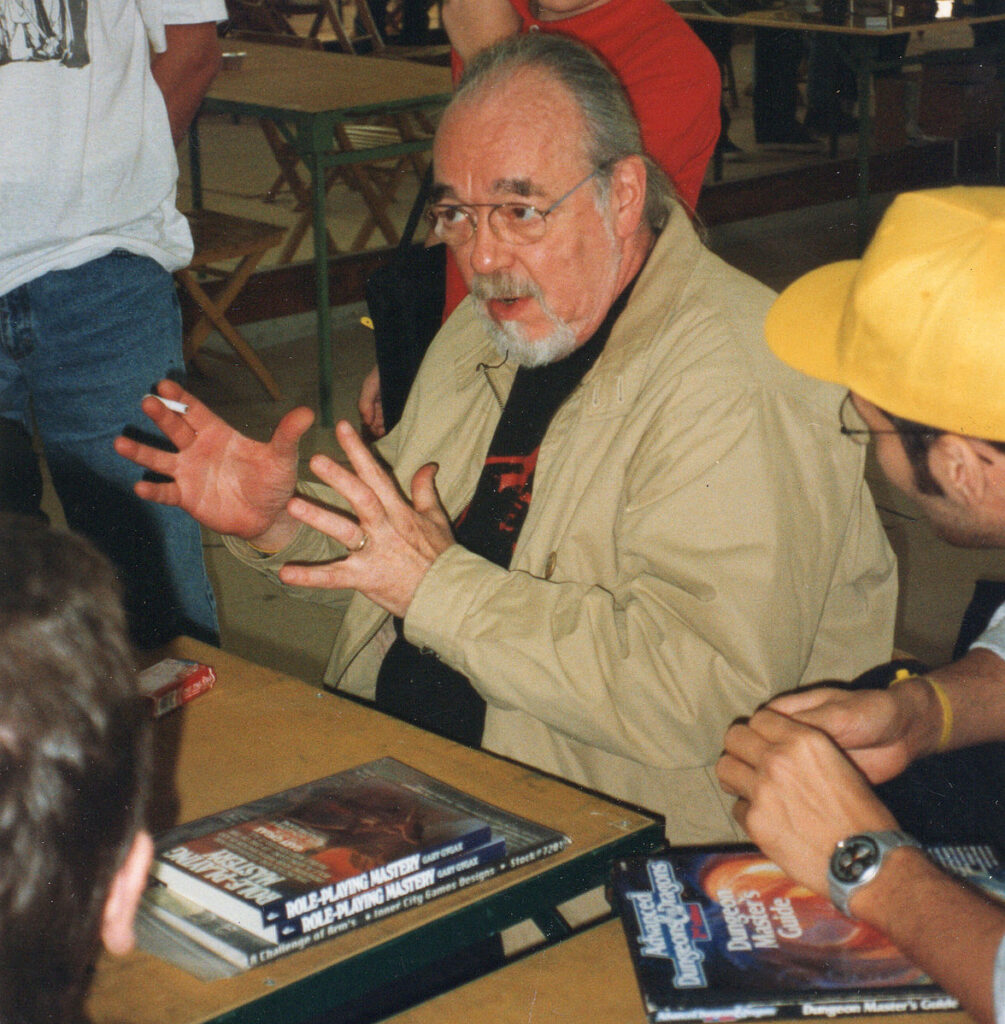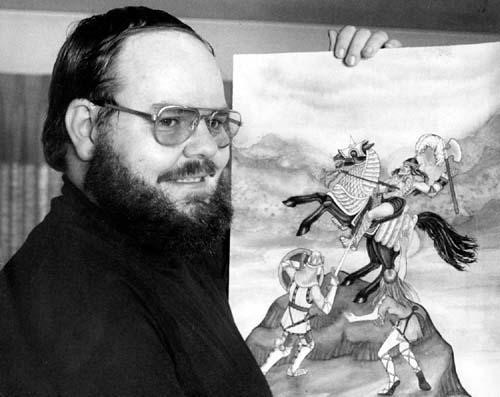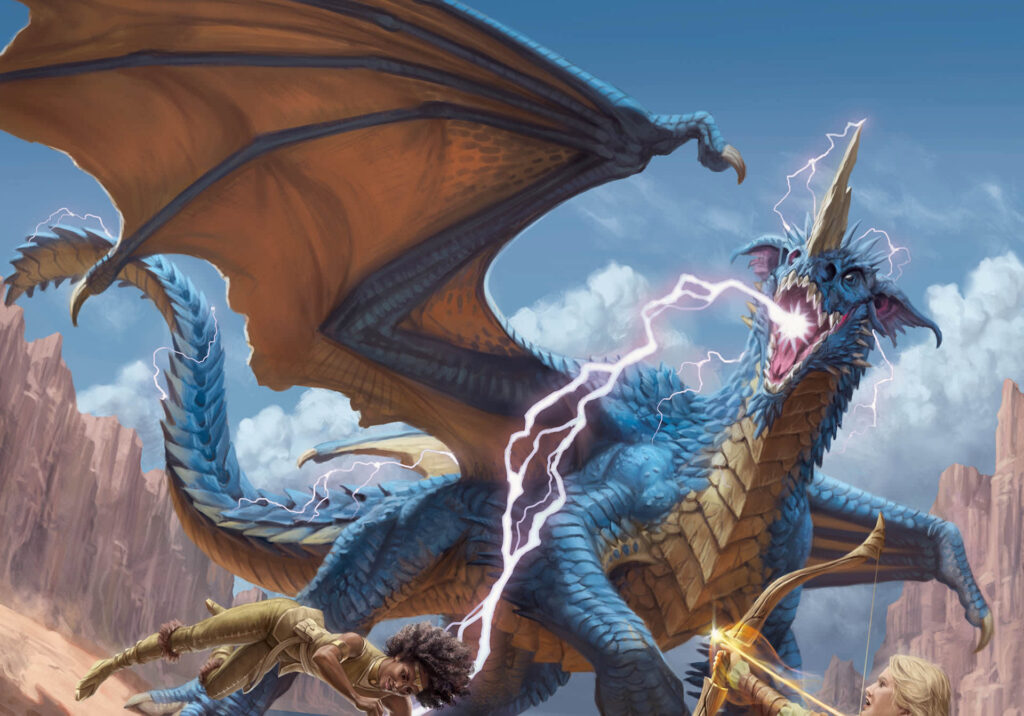If you’re someone who loves role-playing games, whether it be tabletop or video games, then you owe a lot to the man who pretty much invented the genre. Gary Gygax is known as the father of the RPG for his role in co-creating the phenomenon known as Dungeons & Dragons (D&D).
This game, with its blend of imaginative storytelling, intricate game mechanics, and character development revolutionized nerd culture. It also laid the groundwork for an entire realm of interactive narratives.
In this article, we will explore Gygax’s life and how his publishing company went from his basement to a thriving corporation with 600 employees in less than a decade

Early Life and Influences
Gary Gygax was Born in Chicago in 1938. His parents were Almina Emelie “Posey” and Ernst Gygax, a Swiss immigrant and former violinist with the Chicago Symphony Orchestra.
Growing up in the 40s, there weren’t any video or electronic games where young Gary could let his imagination run wild. The only games available at the time were board games like Monopoly and Scrabble, card games, chess, and checkers.
After World War II, a new type of game was starting to gain popularity; Tabletop war games. These games simulated military conflicts, allowing players to command armies, deploy units, and engage in strategic and tactical maneuvers.
One of the key features of tabletop war games is the use of miniatures or game pieces to represent military forces, vehicles, and terrain. These games were turn-based. They relied on the roll of a dice to determine the outcomes of the battles – features that would later become key components for Dungeons & Dragons.
Gygax and his friends took their love for war games and history and made their own versions with their own sets of rules. They would craft intricate tabletop recreations of famous battles, like the Battle of Gettysburg. They strategically positioned toy battalions representing infantry, cavalry, and artillery.
This passion to create and refine games persisted throughout Gygax’s young life. Even after marrying in 1958 and becoming a father of two by 1961, he continued to dedicate his free time to epic imaginary battles.
More Than Just a Hobby
In 1967, Gary Gygax co-founded the International Federation of Wargamers (IFW) alongside his buddies Bill Speer and Scott Duncan. IFW provided a platform for the burgeoning wargaming community to connect and exchange rules and ideas.
They even published their own newsletter.
That same year, Gygax hosted a 20-person gaming meeting in his basement. This was known as “Gen Con 0.” The success of this event paved the way for the inaugural Lake Geneva Convention, or Gen Con gaming convention, held in 1968 at Lake Geneva’s Horticultural Hall.
In October 1970, Gary Gygax lost his job at an insurance company after nearly nine years of service. Unemployed and now the father of five children, he sought to turn his passion for games into a career by designing board games for commercial sale.
Although he sold some of his games, it wasn’t something that he could make a living off of. To make ends meet, Gygax started cobbling shoes in his basement. This worked out perfectly because it allowed him to continue to dabble in his passion for wargaming.
Gygax published a set of wargame rules called “Chainmail,” in 1971 with hobby-shop owner Jeff Perren. It was a medieval-era tactical combat game that used miniature figurines to represent armies and simulate battles.
The rules to the game were published in Castle & Crusade Society’s fanzine, The Domesday Book. This got the attention of Don Lowry, a fellow gamer Gygax had met at Gen Con III the previous year.
Lowry had since started his own gaming company called Guidon Games and was looking for talented and imaginative people to join his crew. Gygax saw an opportunity to turn his hobby into a career and jumped on board.
The first game that Guidon Games published was “Chainmail”, based on the rules that Gygax and Perren had created. This first edition of “Chainmail” included a fantasy supplement introducing rules for warriors, wizards, and various monsters from nonhuman races.
It was inspired by the works of J. R. R. Tolkien and other literary sources. Despite being published by a small company, Chainmail achieved relative success, selling 100 copies per month.
Meeting Dave Arneson and Creating Dungeons & Dragons
In 1971, Dave Arneson, a student at the University of Minnesota who had been inspired by “Chainmail”, made his own set of rules for the game. His modifications moved the setting from above ground on the battlefield to underground dungeons.

It involved individual characters with their own personalities and storylines that the users could create on their own. To help players navigate the story, Arneson assumed the role of the “Master” to settle disputes and push the players along.
After six months of tweaking and perfecting the rules, Arneson traveled to Lake Geneva to demonstrate “Blackmoor” to Gygax. After several hours of watching the game, Gygax was hooked, “I think we can make something special out of that”, he said.
Within two weeks of the Blackmoor demonstration, Gygax produced a 50-page set of rules. He tested these rules with his own family. His two oldest children, Ernie and Elise, became the first adventurers in a setting Gygax dubbed “Greyhawk.”
Gygax sent the 50 pages of rules to his network of wargaming contacts. He urged them to playtest the new game.
The collaboration between Gygax and Arneson continued. However, the final draft contained changes that Arneson had not vetted, leading to some differences in vision regarding certain rule details.
By mid-1973, based on feedback from playtesting, Gygax created a 150-page revision of the rules. The system governing magic in the game drew inspiration from fantasy author Jack Vance’s “The Dying Earth” stories. The overall system incorporated elements from the works of authors such as J. R. R. Tolkien, Robert E. Howard, Michael Moorcock, and others.
According to nerd mythology, it was Gygax’s daughter Cindy who was the deciding voice in coming up with a name for this new game: Dungeons & Dragons. It was simple yet conveyed the scope of the adventure players were about to embark on.

Founding of TSR
With their new game ready for publication, they just needed someone to buy it. Gary went to the Guidon Games to publish it but said it was too big for their company to produce.
Undeterred, he went to Avalon Hill, the IBM of wargames. But they had no interest in the game and could not see the potential that Gygax saw.
Gary Gygax decided to take matters into his own hands. In 1973, Gygax, along with his friend Don Kaye, co-founded Tactical Studies Rules (TSR). This was a company specifically created to publish D&D.
After investing their own money, the first edition box set of Dungeons & Dragons was released in 1974. It included three rulebooks—Men & Magic, Monsters & Treasure, and The Underworld & Wilderness Adventures—along with a set of polyhedral dice.
To everyone’s astonishment, the game sold out in less than a year. It slowly began to spread by word of mouth on college campuses and parent’s basements around the country.
Before too long, it was a cultural phenomenon. It inspired a whole generation of kids who would go on to expand on these rules and ideas in other forms of entertainment.
Legacy
The mark that Gary Gygax and Dave Arneson left on the gaming world was profound. Not only did they revolutionize the tabletop gaming industry but they pretty much invented the RPG genre.
Their rules, monsters, classes, and experience points inspired an entire generation of gamers who would go on to create the video game industry. The first RPG video games, such as “Wizardry” and “Ultima,” directly drew inspiration from D&D’s rule mechanics, fantasy settings, and narrative-driven gameplay.
Today, there isn’t a game out there that wasn’t inspired by D&D at some level. It is all thanks to the creative mind of Gary Gygax and his childhood friends.
References
Dungeon Master: The Life and Legacy of Gary Gygax
https://www.wired.com/2008/03/dungeon-master-life-legacy-gary-gygax/
Gary Gygax
https://en.wikipedia.org/wiki/Gary_Gygax#
Chainmail

